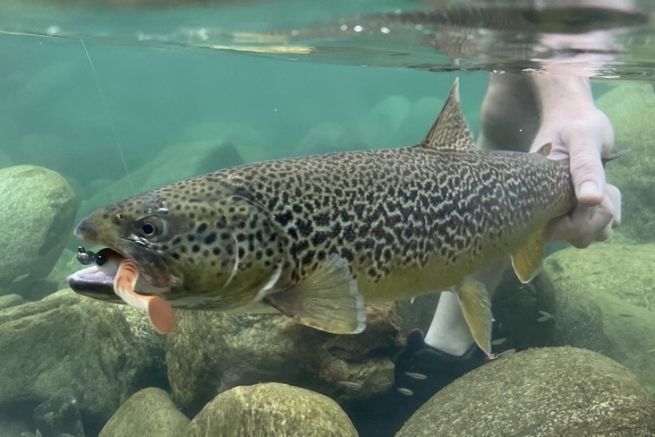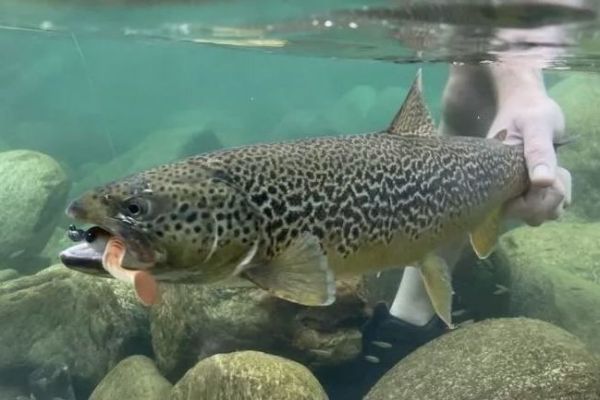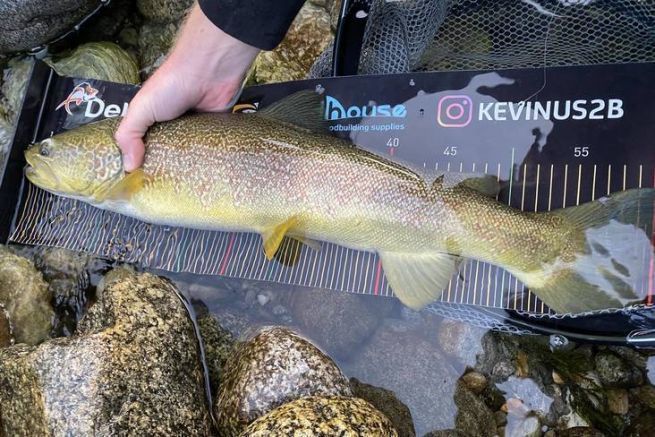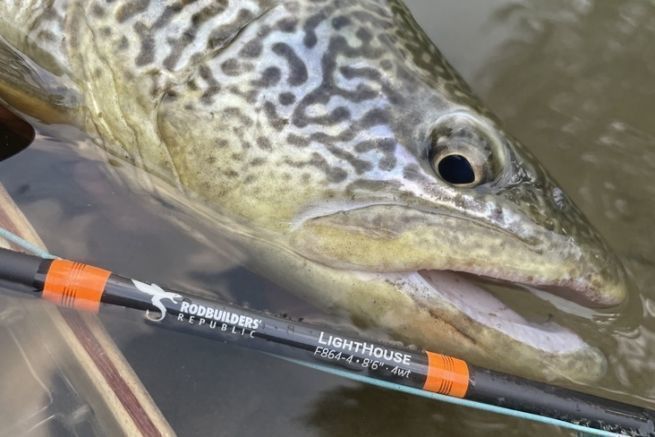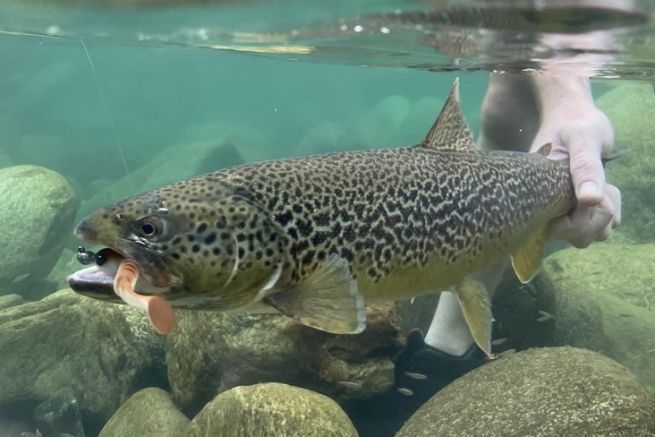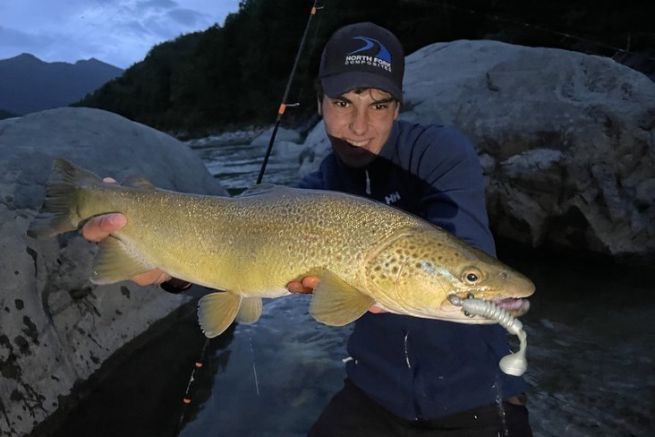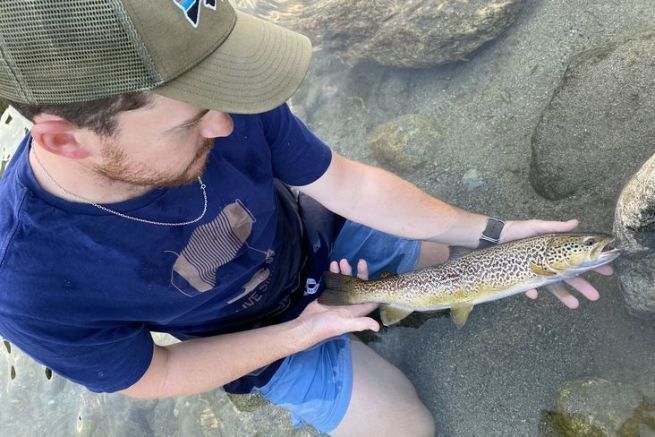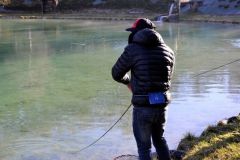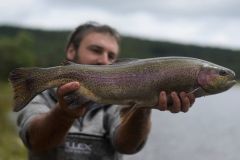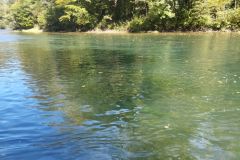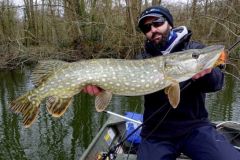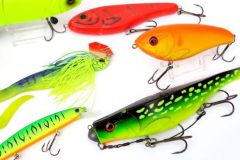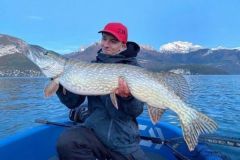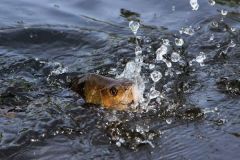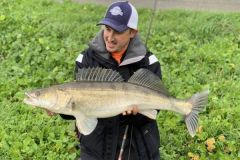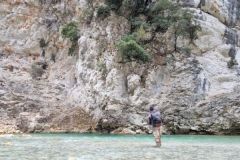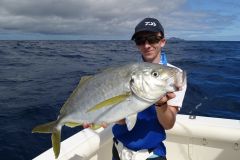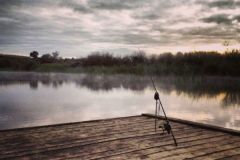Summer is the best time to fish with soft lures
In the summer, with water levels being quite low, it is almost impossible to fish with swimbaits, except in the deeper holes, although this is not very effective during this period. The use of metal lures such as wobbling or spinning spoons is more relevant. However, it is difficult with this type of lure to hold the current and stay fishing between the blocks to hope to find the Grail. In large pools, wobbling spoons slowly brought back above the bottom can allow to touch some fish which would be still a minimum active at daybreak.
The ideal type of lure to fish for marmorata trout in summer is undoubtedly the soft lure, and more particularly the shad. Indeed, the first advantage of a shad is that it can be mounted with the desired weight, thus allowing to adapt to the depth and the strength of the current of the various spots.
Another positive point of the soft lure is that it is generally much cheaper than the hard lures, which is not negligible when fishing in the rocks and when you are regularly hooked. Finally, the majority of shads with a substantial paddle do not stall, even in strong currents, which is an important advantage when fishing for marmorata.
As for the size of the lures, it is possible to use rather large lures, as Marmorata trout are not afraid to attack large prey! Soft lures from 3 to 12 cm can be used.
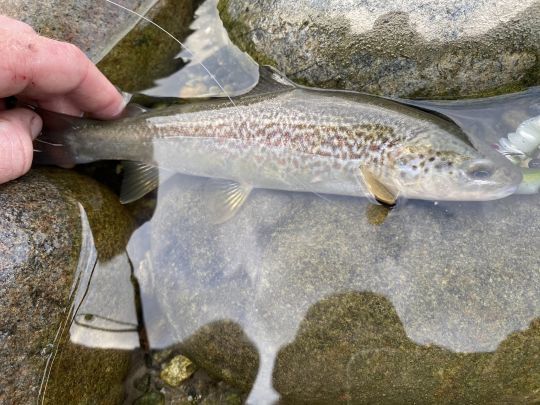
The skeleton, a good shad for marmorata
The Skeleton is a soft lure that is widely used for trout in general and in which we have confidence. It is quite naturally that we have turned to this lure with its atypical look with its big bulging eyes!
The Skeleton Delalande is the lure that allowed us to catch most of the trout of the trip. Thanks to its round body composed of many rings, it is very flexible and swims at the slightest request. Its round paddle emits strong vibrations, which makes it identifiable by predators even in full current. These two characteristics also offer a very pronounced rolling which also makes it identifiable, in particular on colors having a strong contrast of colors between the back and the belly.
The 8 cm size is the best compromise we have found for fishing marmorata trout, it does not pull too much in the rod, and remains a correct size prey to hit all sizes of fish!
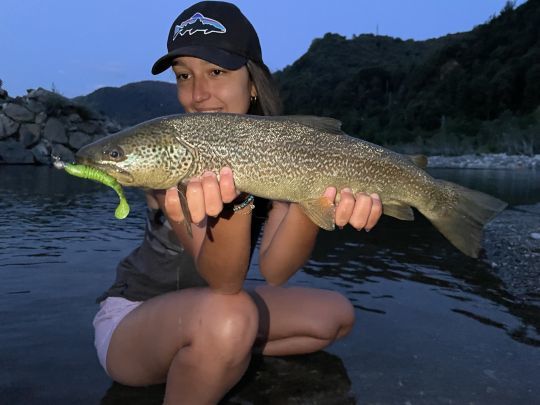
The choice of the lead head
To leave nothing to chance, we decided to fish with leaded heads with reinforced hooks: the Pro Delalande head. These lead heads are strong and very sharp that it is impossible to open in combat unlike the ranges generally used for trout, which have fine iron hooks.
The sinker of this lure is oval and slightly inclined downwards, which allows the lure to swim better on the way down. In our case, it will also allow us to lean better on the current and thus avoid that the lure goes up too quickly in the water layer. The weights we used are mainly the 2 and 3 gram heads, these weights are perfect for fishing in less than 1 meter of water.
To fish deeper holes, it is possible to use 5 grams leaded heads, in order to fish deeper or to cross more quickly a current a little more sustained.
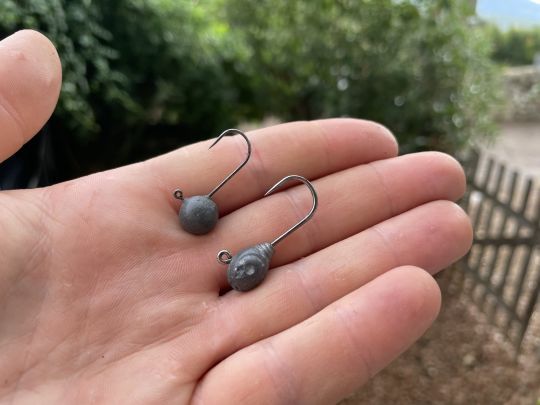
The colors of soft lures for marmorata trout
Italian fishermen use a lot of white, pink and chartreuse colors which are regularly seen in pictures and boxes. Not being too fond of monochrome lures and even less of all-white ones, we have rather chosen colors with a contrast between the belly and the back.
The pearly ayu back and pearly brown back are very natural colors that we use regularly on trout, and as we often repeat, a lure or a color in which we have confidence is always more fishing. The same goes for the mojito color, which is a chatreuse with an ayu back, a color that is both natural and very bright. To offer something very natural once the day is over, we have also selected some lures with a transparent glittery ayu back color (SPY) which is a must for trout fishing in very clear water.
Again, despite the large number of colors tried, none of them seemed to make a huge difference in terms of effectiveness, except for those who spent the most time in the water...
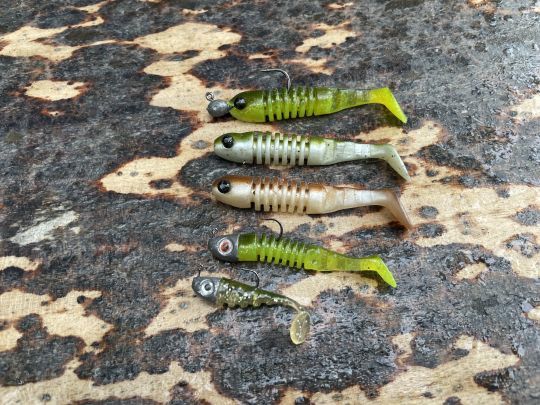

 /
/ 